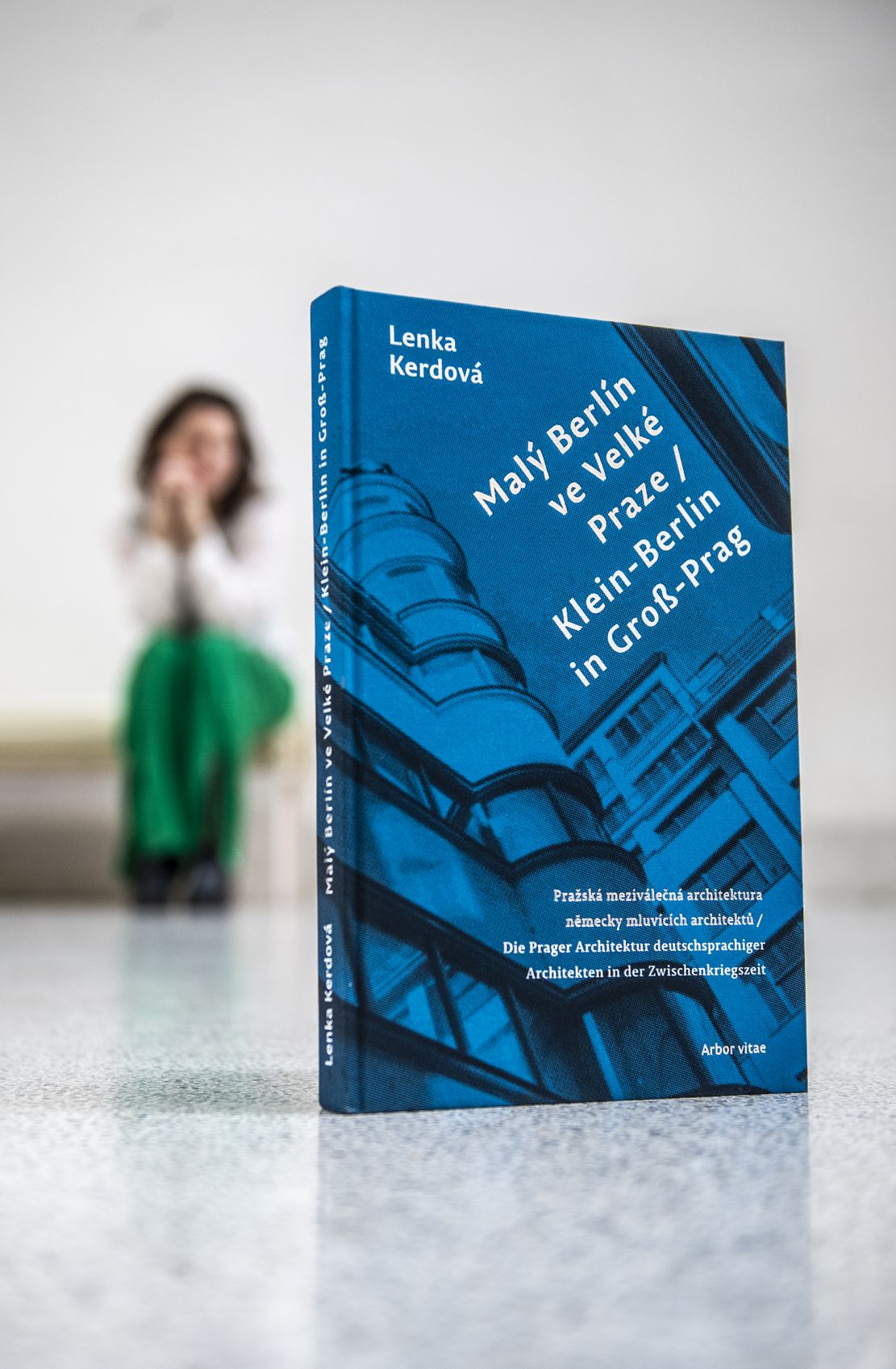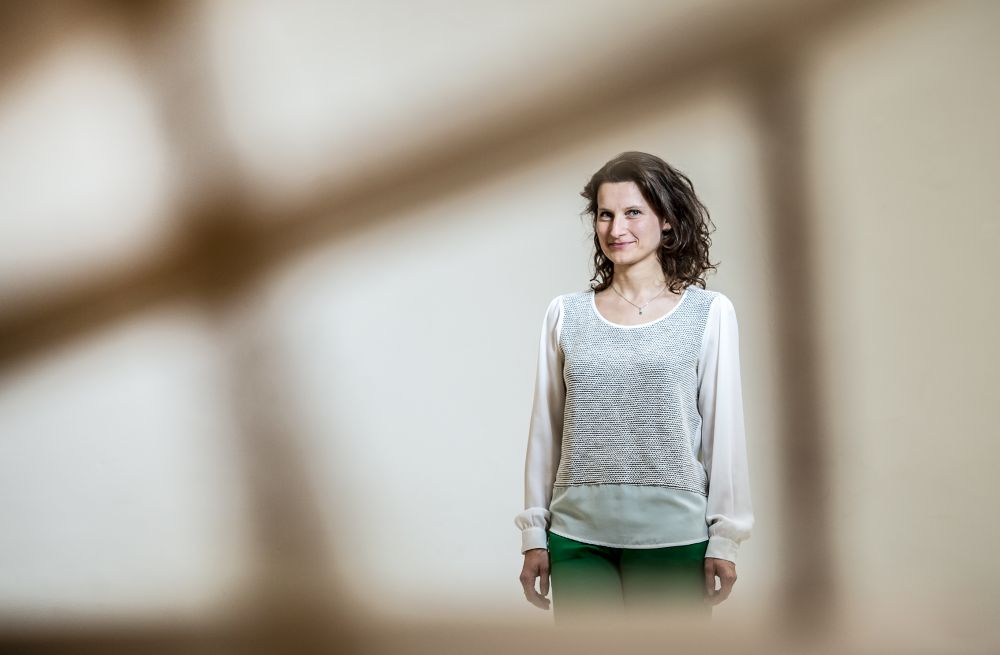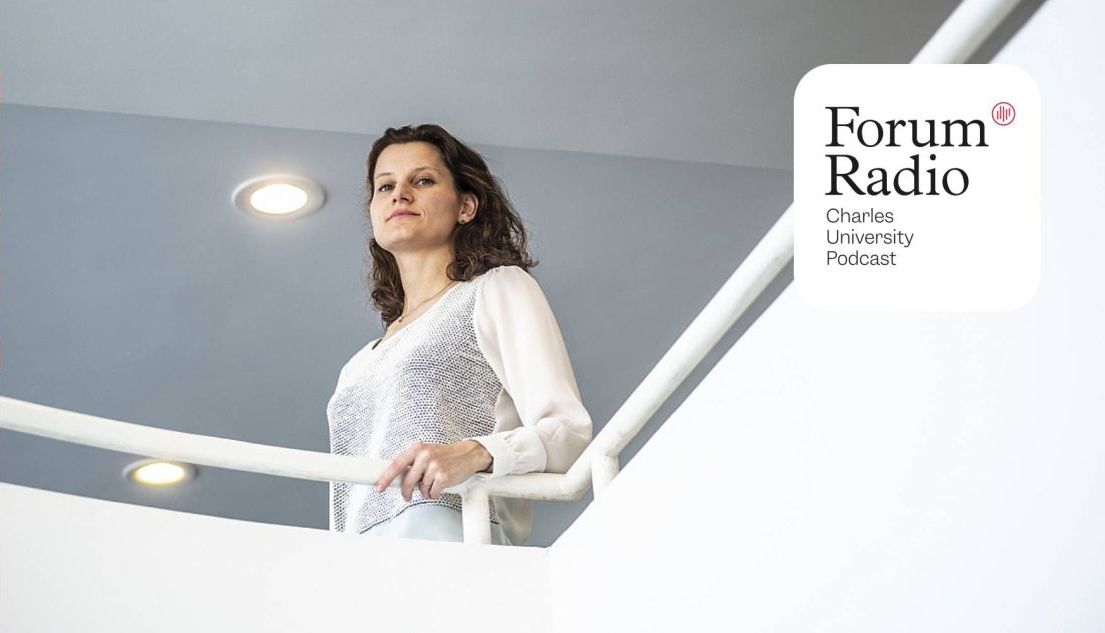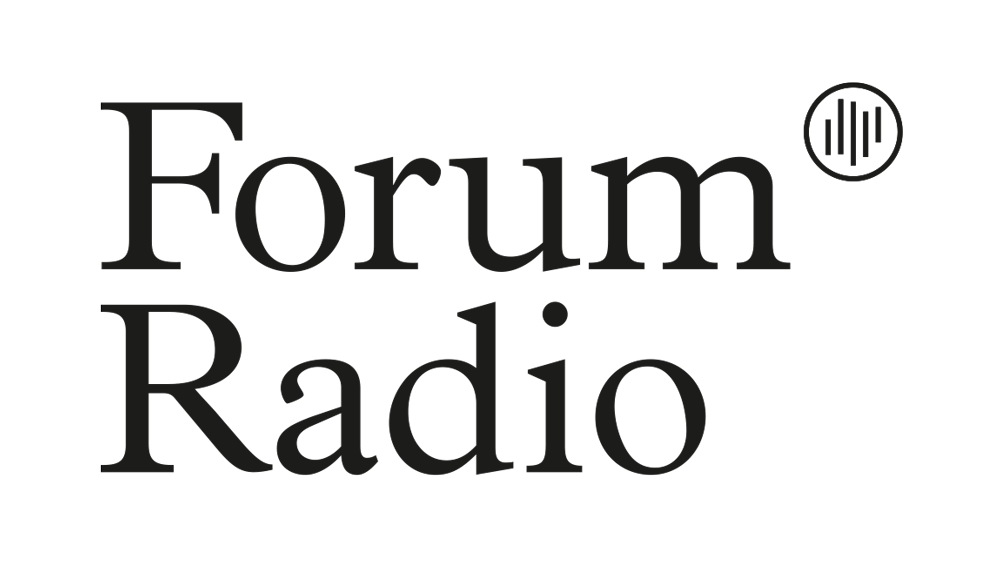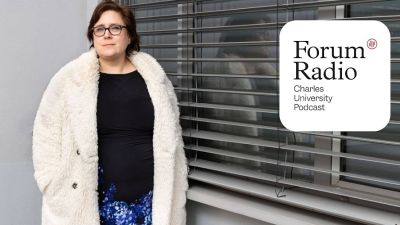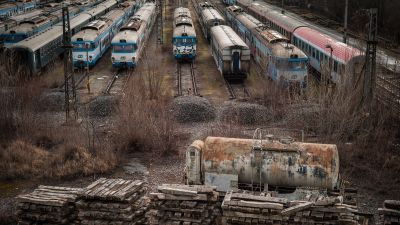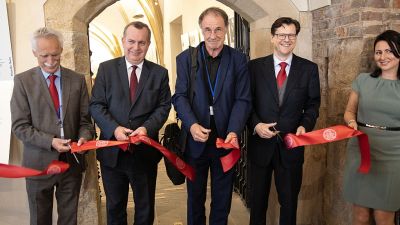Last month saw the publication of a much-anticipated new monograph titled Little Berlin in Big Prague by artist, academic researcher and art history graduate Lenka Kerdová. The foundation for the book was fascinating research (originally for her Ph. D.) examining Prague architecture during the interwar period, specifically buildings designed by German-speaking architects. These included professionals of various backgrounds whether ethnic Germans, Czech Jews, or German-speakers from abroad seeking their place in a vibrant new market.
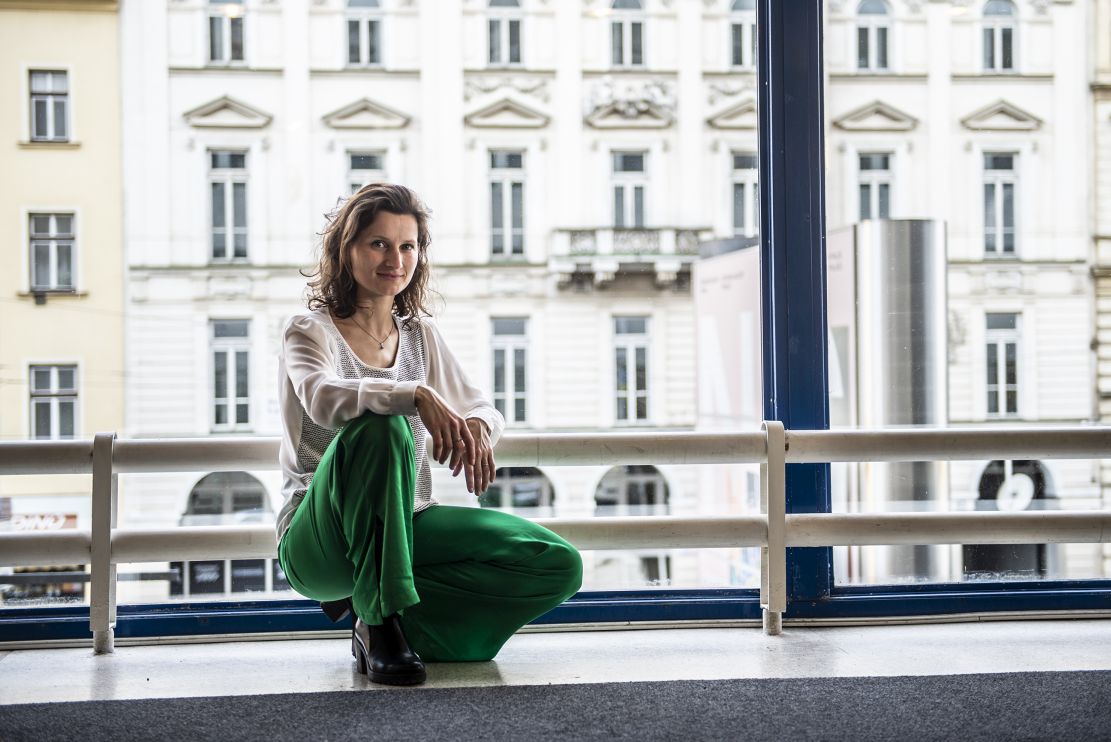
Lenka Kerdová posed for Forum at the National Gallery's famous Trade Fair Palace - a great home to modern artwork in Prague. April 2023.
Kerdová’s book looks not only at architecture but also complex social, economic as well as political factors and relationships that influenced life in Czechoslovakia during the First Republic from 1918-1938 preceding the Second World War. In her work, Kerdová compares and contrasts Czech Functionalism and more traditional approaches and examines the state of the discourse, professional competition and other trends of the day. Bilingual (in Czech and German), full of period photographs, her book brings new attention to a largely lost era. In this episode we talk not only about Little Berlin but even a bit about her own artistic work and what it was like to study not one but two schools: Charles University and AVU – The Academy of Fine Arts in Prague.
Excerpts from our interview:
An unexpected visit
“The desire to learn more about the architects who designed many of these buildings was in a way quite private and in a way even emotional. We had bought a flat in Prague 7 in the very area that had once been home to the German-speaking community. After the first month we got a surprise in the form of an old lady in front of our door. She was an ethnic German who hadn’t seen her flat in 70 years or so. This was perhaps the last time she would be able to come from Berlin to Prague. So I showed her inside and I ended up even shooting a short film on the topic. The episode showed me that, even as a student of art history, there were still many chapters that were unknown or little known and that made me interested in looking further into this Czech-German topic. I began doing research and slowly began to dig deeper.”
Almost forgotten
“There are multiple reasons why the topic of many of these architects were not well-researched before – some political, some competitive, some historic – and the result was a lack of research and a great lack of material in the archives. After the communist takeover in 1948, the German past was shunned {not only because of the democratic pre-war period and the war itself and the Holocaust, but also because more than 2.5 million ethnic Germans were expelled from the country following Nazi Germany’s defeat – editor’s note). Even during the interwar period, there was a great emphasis on the part of the Czech avant garde to highlight Francophonic culture. The German impact in architecture, literature, arts and letters was a strong one. In architecture, the influence was particularly obvious and I even knew that there was an area nicknamed ‘Little Berlin’.
“But I didn’t know anything about the architects really, where they were born or their stories. And it turned out there was a great mix of different backgrounds. It was difficult to find information because really the normal standard way of doing research was not possible in this case because of sources were so limited or non-existent. I did find information in archives in Berlin, Frankfurt, Bratislava. Historic newspapers were important as a source, as was the work of an early female sociologist here, which was very interesting. I studied the results of censuses in the 1920s and '30s and one of the most important sources of all I found in the Architekturzentrum in Vienna, where, by some accident, they had the memoirs of one of these architects, Rudolf Hildebrand, and that was quite exceptional. Mostly, the work was really based on minor findings in archives while the construction of the work was largely methodologically based. Normally, I am not all that patient, but here I was overcome by curiosity… so I kept at it.”
At home in Little Berlin
“The district of Prague 7 was not the only part of Prague where German-speaking architects designed successful projects but it was a popular area. There was a train connection to Germany and the area was attractive because of the quality living conditions that were emerging then, close to Prague parks as well as the river. At that time, the lower part of Prague 7 called Bubny, was changing very quickly. It used to be a place of small factories but changes in industry saw them demolished and a residential area spread instead. There was spaces for new residential buildings and strong representation at the local town hall. But of course prominent buildings by German-speaking architects are found in other parts of Prague as well.”
The Brown House
“Adolf Foehr designed a residential building which was itself nicknamed Little Berlin. It was very modern, making use of the latest technology in its day. It was also known as the Brown House due to its façade but the name took on a new (more sinister – editor’s note) meaning later. The apartment house built in 1935 and was home to German and German-Jewish members of the community but as conditions worsened many fled, many left, and those who could escaped. In 1939, the building, which was one of the most modern of its kind, housed German officials after the Nazis occupied Bohemia and Moravia.”
A mix of styles: modern yet daring - right next to a Gothic tower
“There are many different buildings which may be of interest. One I think that was not so easy to design, given its proximity to the Prague gateway tower Prašná brańa, was the Böhmische Escompte-Bank. Prague would need something like they have in Brno or Plzeň and many other cities, highlighting important buildings. Brno has the Brno Architectural Manual. Prague could have one of those and an important part of that could be German architecture.”
| Forum Radio - Interview / Episode 14 / Lenka Kerdová - When there was a "Little Berlin" in Prague / Runtime: 39 minutes and two sec. |
Lenka Kerdová completed a Masters as well as a Ph. D. in Art History at the Faculty of Arts at Charles University, the former while jointly studying painting at AVU – the Academy of Fine Arts in Prague. Her doctoral research led to the publication of an impressive monograph in April 2023 mapping Prague’s interwar architecture and the contribution of German-speaking architects. Kerdová, who is based as a junior researcher in Vienna, is a respected artist in her own right, working in many different media, from watercolours to film. She is active in promoting artistic ties between Vienna and Prague. You can learn more about her work at her website.
